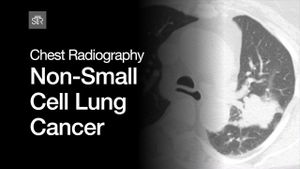The development of effective vaccines against respiratory syncytial virus (RSV) has long been hampered by challenges, including historical failures and safety concerns. Recently, researchers have unveiled promising results from their investigation of an mRNA vaccine, known as LC2DM-LNP, which uses a truncated version of the pre-F protein to bolster immune responses against RSV.
RSV is notorious for causing severe respiratory infections, particularly among infants and the elderly, making the urgency for reliable preventive measures increasingly apparent. This new vaccine leverages advanced mRNA technology and aims to improve both humoral and cellular immune responses, marking it as a potential alternative for high-risk populations.
The study, conducted by researchers from various institutions, published its findings on the efficacy of LC2DM-LNP across several animal models. When administered to young and old female mice, the vaccine elicited strong neutralizing antibodies and skewed T-cell responses toward the Th1 profile, which is deemed beneficial for avoiding adverse reactions typically associated with Th2 responses. Notably, the findings showed no signs of vaccine-enhanced respiratory disease (VERD), indicating improved safety over previous RSV vaccinations.
Previous RSV vaccine trials have been marred by issues such as VEAD, which led to severe outcomes. One such trial was linked to the FI-RSV vaccine developed decades ago. Given the tumultuous history of RSV vaccines, the advancement of LC2DM-LNP is particularly significant because it appears to evade past pitfalls.
The LC2DM-LNP is unique as it features lipid nanoparticles encapsulating the modified pre-F protein mRNA, which enhances its stability and immunogenicity. Tests showed the vaccine effectively induced higher levels of neutralizing antibodies—by over four times compared to conventional vaccines—providing hope for developing long-lasting protection against RSV.
This research used various models to assess the vaccine's performance, including female cotton rats, which are closely representative of human responses to RSV infection. The findings were encouraging, demonstrating significant immunity and highlighting the vaccine's capability of transferring protective antibodies to offspring when administered to pregnant females.
The safety profile of the vaccine was also noteworthy; as it provided strong protection against RSV without leading to exacerbated lung inflammation or other serious side effects associated with Th2-biased immune reactions. This safety aspect is particularly relevant for infants and the elderly, who are the primary targets for RSV vaccination strategies.
The team’s methodology involved thorough experimental designs, wherein they evaluated the immunogenic responses across different doses and through various routes of administration. Their evidence stemmed from serological measurements, viral challenges, and pathological assessments, all underscoring the robustness of the antibody responses elicited by the LC2DM-LNP vaccine.
Moving forward, the researchers suggest LC2DM-LNP holds potential not just as a standalone vaccine but also as part of broader vaccination strategies targeting vulnerable populations. With this promising development, they anticipate advancing to human clinical trials, aiming to provide significant immunity across age groups.
Given the global health burden posed by RSV—the leading cause of hospitalizations among infants—it is evident from these findings how pivotal advancements like LC2DM-LNP could shape future vaccination strategies. Health organizations and the scientific community remain hopeful for this innovation to establish new standards for RSV prevention.



